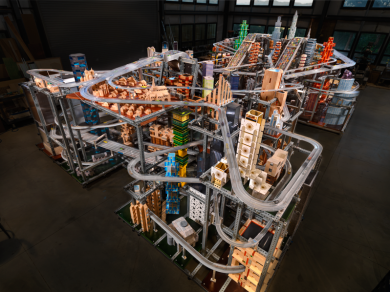As the resident policy nerd here at Tech in the Arts, few things excite me as much as infrastructure policy, especially as it relates to cities and how they will evolve and change in the years and decades to come. The “city of the future” concept has been around for as long as the republic itself, with the same questions often being asked: how will people live? What will our houses look like? And, perhaps most importantly, when will we get the flying car?
Instead of futuristic fantasies that have little hope of implementation, I often favor the realistic side of things, and am drawn to concepts of future cities that incorporate existing technologies and the gradual improvements that we will no doubt see in our future metropolises. With mega cities becoming a larger part of the American psyche and gradually accounting for a higher and higher percentage of our nation’s population, the incentive to promote and showcase cities of the future has never been higher.
relates to cities and how they will evolve and change in the years and decades to come. The “city of the future” concept has been around for as long as the republic itself, with the same questions often being asked: how will people live? What will our houses look like? And, perhaps most importantly, when will we get the flying car?
Instead of futuristic fantasies that have little hope of implementation, I often favor the realistic side of things, and am drawn to concepts of future cities that incorporate existing technologies and the gradual improvements that we will no doubt see in our future metropolises. With mega cities becoming a larger part of the American psyche and gradually accounting for a higher and higher percentage of our nation’s population, the incentive to promote and showcase cities of the future has never been higher.
A new exhibit opened this past weekend in Los Angeles seeks to show what kind of city we may gradually evolve into. Metropolis II, by artist Chris Burden, currently on display Fridays and weekends at the Los Angeles County Museum of Art, is a living, breathing, working model of a futuristic city designed around transportation and infrastructure. Instead of a computer model or video game, this exhibit is a handmade, painstakingly detailed work of art that shows a city in action.
The scale of the exhibit is quite impressive. In total it is about 500 square feet and is about ten feet tall at its highest point. While there are no flying cars, there are actual miniature cars included in the exhibit, and lots of them: over the span of an hour, over 100,000 tiny cars whiz through the exhibit, speeding between buildings and skyscrapers. There are eighteen roadways handling all of these cars, including a 6-lane freeway. Trains are included as well, with tracks that loop through the exhibit; taken together; all of these cars and trains speeding through the exhibit at such breakneck speed produce a visual and audio experience unlike any other, as the viewer is able to experience the sights and sounds of a futuristic and thriving metropolis.
Designed and built over a span of five years, the exhibit is absolutely worth a look. Here’s a short film looking at the design and production of the sculpture:
http://youtu.be/YqSkRgySAEg
While some may prefer the futuristic futures of films like ‘Blade Runner,’ I enjoy the works of art that look at how cities will evolve and change in the short term. Faster cars, more drivers, taller buildings, denser neighborhoods; these are all characteristics of future cities that seem to be realistic in the short term. The great thing about Burden’s exhibit is how he takes modest changes to our current city structures, like more cars and expanded expressways, and is able to depict the frenzied and bustling future of our cities in a simple and straightforward way.
The exhibit is currently on display in Los Angeles, and if you are in the area, it is definitely worth a look. It may not appeal to futuristic film lovers, but for transportation and infrastructure policy nerds like myself, it is a reminder of why we are so interested in the futures of our wonderful and dynamic major cities.
(Photo credit: Los Angeles County Museum of Art)






